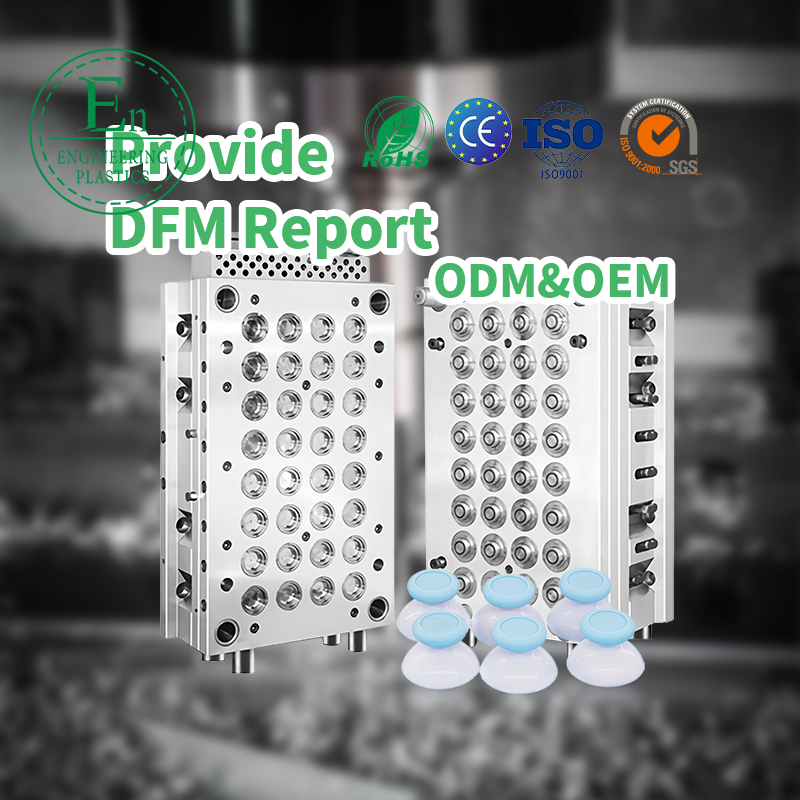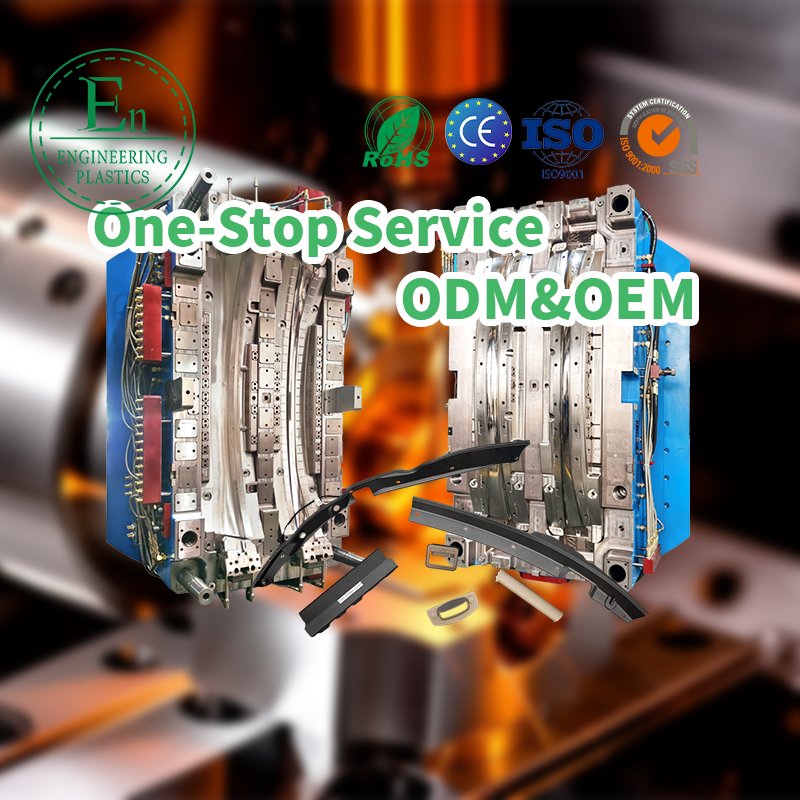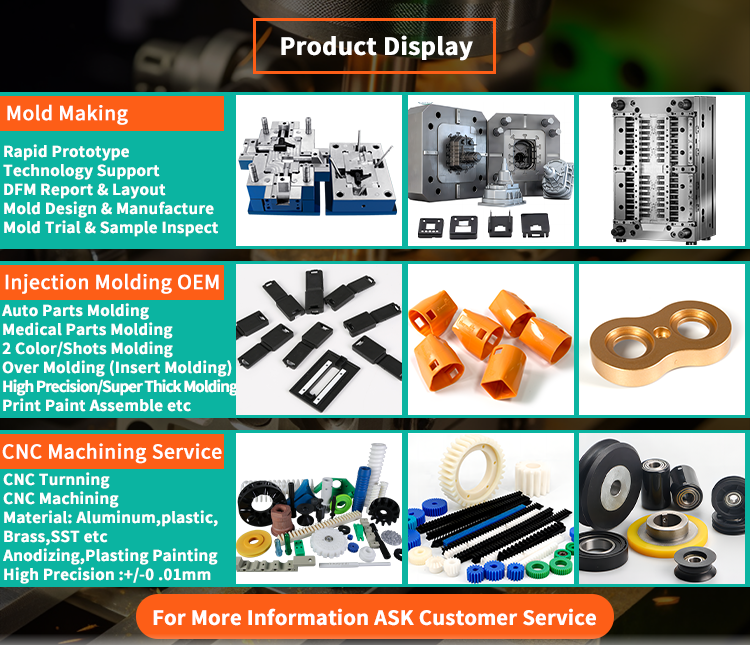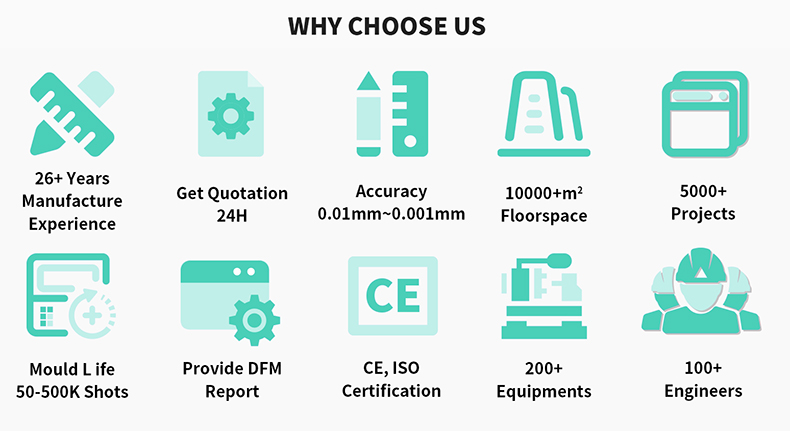
Key Considerations for Mastering Injection Molding To master injection molding with polymer blends, several key considerations must be taken into account. First, understanding the compatibility of the polymers involved is crucial. Compati
Assist global clients in engineering material,professional custom injection molding service,CNC machining service.We can provide you with one-stop solutions.
Those plastics materials like UHMW-PE , MY Nylon , PA6 , POM , HDPE , ABS , PU , PC , PVC, PP , PET , PBT , Acrylic , PEEK , PPS , PTFE , PVDF , PAI , PEI , PSU , PI , PBI etc., they have different characteristic ! For example flowing temperature , crystallization speed , heat dispense , viscosity , pressure, speed , deformation and stripping .
Thanks for clients all along support , we gain lots of successful and failure cases , those experiences we store in database , which guide our new staff avoid same mistake. Today our comprehensive service from industrial design, mold design and manufacturing, volume production and production is based on an end-to-end quality assurance system that delivers an efficient, cost-saving, turnkey solution in plastic injection molding manufacturing.
Our mold team uses the lasted new version software design programs: UG, ProE, SolidWorks, Catia, Rhino etc., you can send any type of drawings xmt,step,vad or .iges. We also give you service is reverse engineering, we can follow your sample to create a completely new 3d drawings and the molds.
Our clients include medical industry, automobile, electronics industry, consume plastic products, etc., Our skilled technician and mould maker specialists work with each individual client and use the best material available for each application, Guides your project through each phase of development to save you time and money. We will explain whole process efficiently in five main stages: the production of the technical preparation stage, the preparation stage of raw materials, parts and components processing stage, assembly and commissioning phase trial identification stage. It is clear and confident to achieve success .







Key Considerations for Mastering Injection Molding
To master injection molding with polymer blends, several key considerations must be taken into account. First, understanding the compatibility of the polymers involved is crucial. Compatibility affects the blend's mechanical properties and processing behavior. When selecting polymers for blending, it is vital to consider their molecular weights, polarities, and thermal properties to ensure that they will work well together. Incompatibility can lead to phase separation, which can adversely affect the material's strength and durability.
Another important factor is the processing conditions during injection molding. Factors such as temperature, pressure, and cooling rates must be optimized to ensure the desired properties of the blended material are achieved. For instance, the processing temperature should be adjusted to accommodate the thermal properties of the polymer blend, preventing degradation of either component. Manufacturers should closely monitor these conditions to achieve the best results and avoid common pitfalls associated with improper processing.
Lastly, thorough testing and quality control are essential for mastering injection molding with polymer blends. Regular testing of the physical and mechanical properties of the produced parts can help identify any inconsistencies or defects early in the production process. Implementing a robust quality assurance program ensures that the final products not only meet industry standards but also fulfill customer expectations. By focusing on these key considerations, manufacturers can elevate their injection molding capabilities and exploit the full potential of polymer blends.


Advanced Techniques for Polymer Blends
As the industry evolves, so do the techniques used for creating and utilizing polymer blends in injection molding. One advanced technique gaining traction is reactive blending, where chemical reactions occur during the blending process. This method can improve compatibility between different polymers and enhance the overall properties of the blend. For example, incorporating additives that facilitate chemical reactions can lead to cross-linking, resulting in enhanced mechanical strength and thermal stability.
Another technique is the use of nanocomposites, which involve blending polymers with nanomaterials such as nanoparticles or nanotubes. These nanomaterials can significantly improve the properties of the polymer blend, such as mechanical strength, thermal resistance, and barrier properties, while using only a small amount of additive. This not only improves performance but also maintains a lightweight profile, making it particularly advantageous for applications in automotive and aerospace industries where every gram counts.
Finally, the use of computer modeling and simulation tools has revolutionized the way manufacturers approach polymer blending. Advanced software can predict how different polymers will behave when blended and processed, allowing for more informed decisions during the design phase. By simulating various scenarios, manufacturers can optimize their formulations and processing parameters before actual production, saving time and resources while reducing the likelihood of defects in the final products.